WESTERN MICHIGAN UNIVERSITY
KALAMAZOO, mICHIGAN
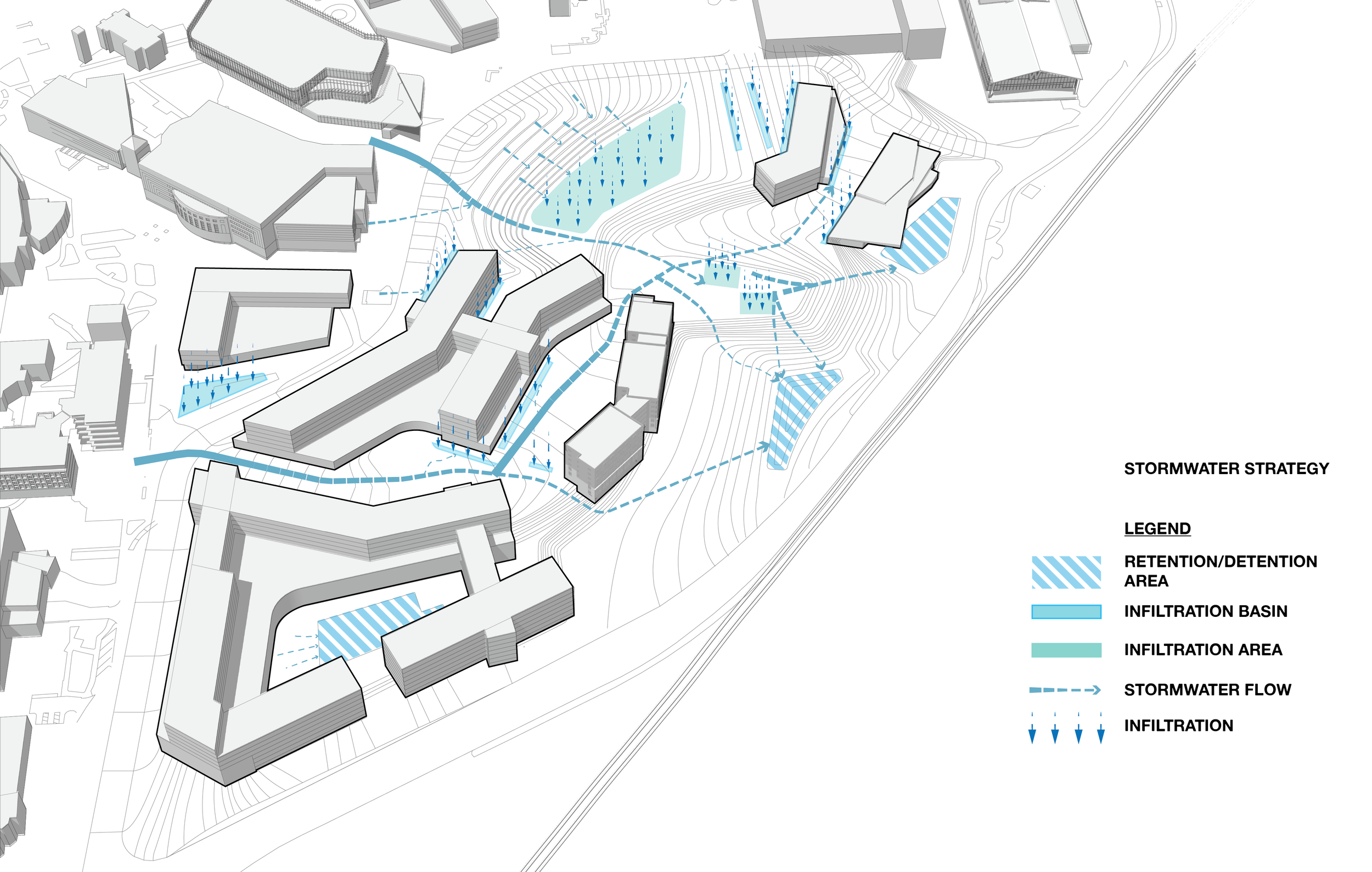
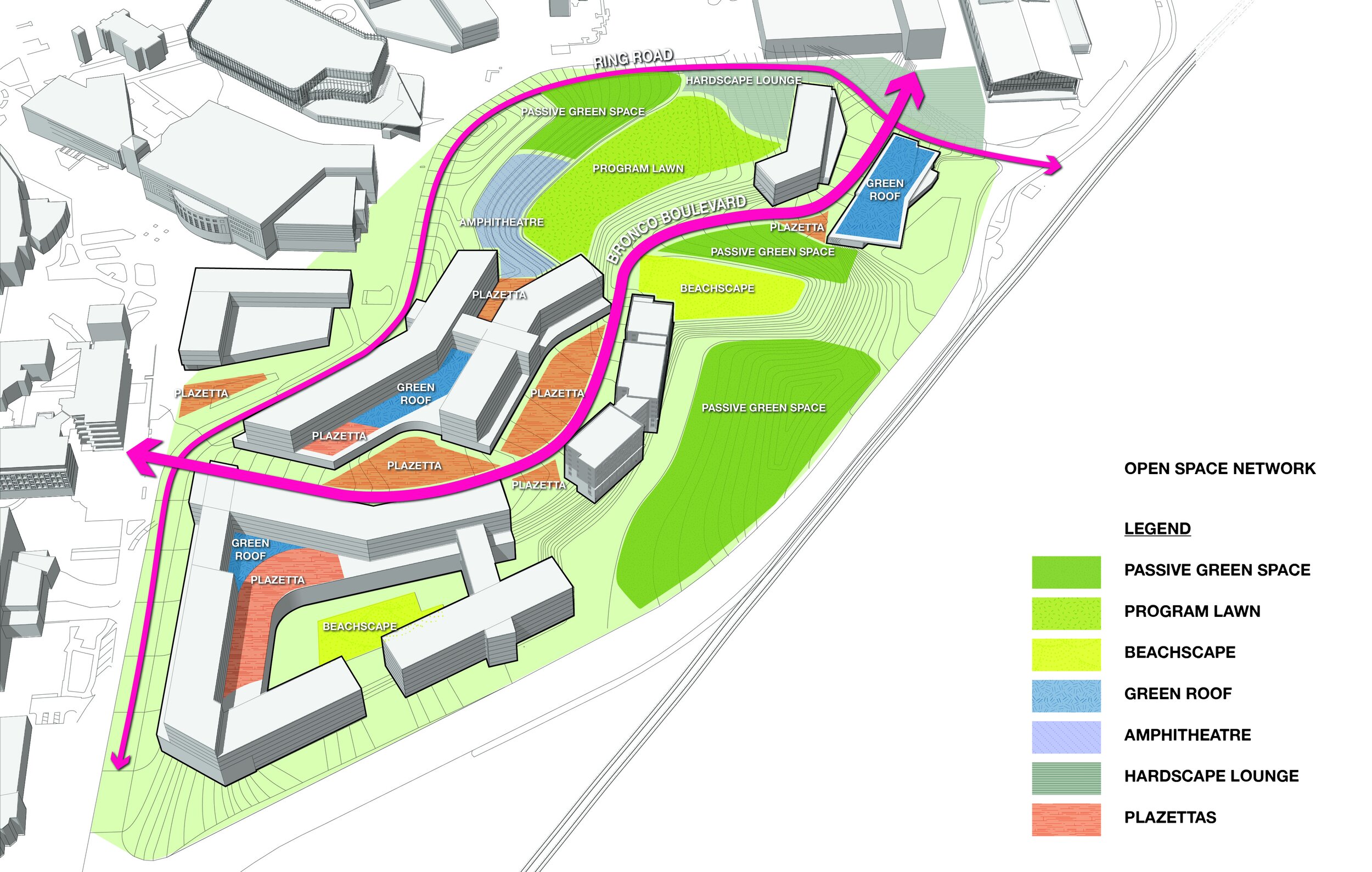
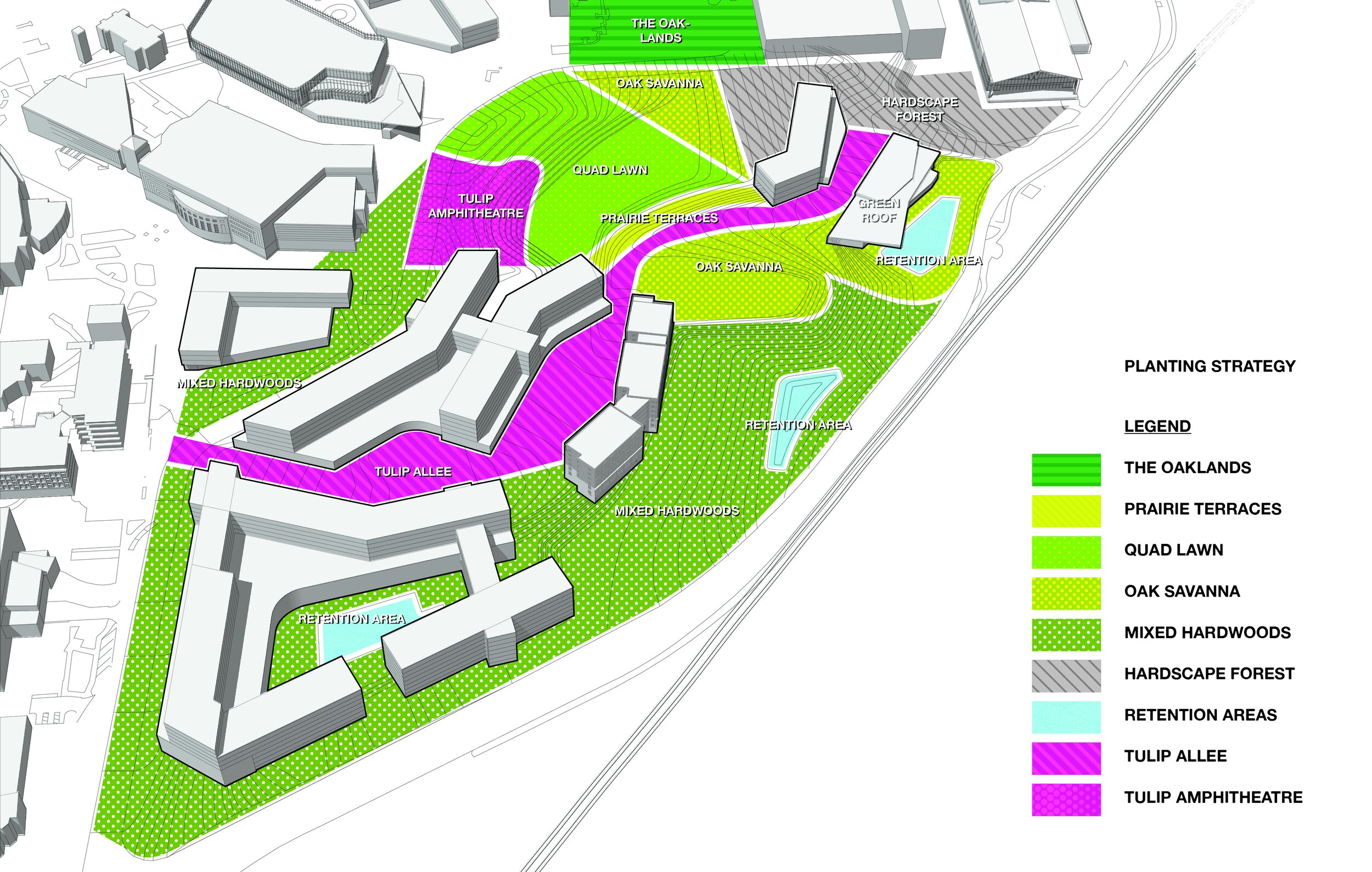
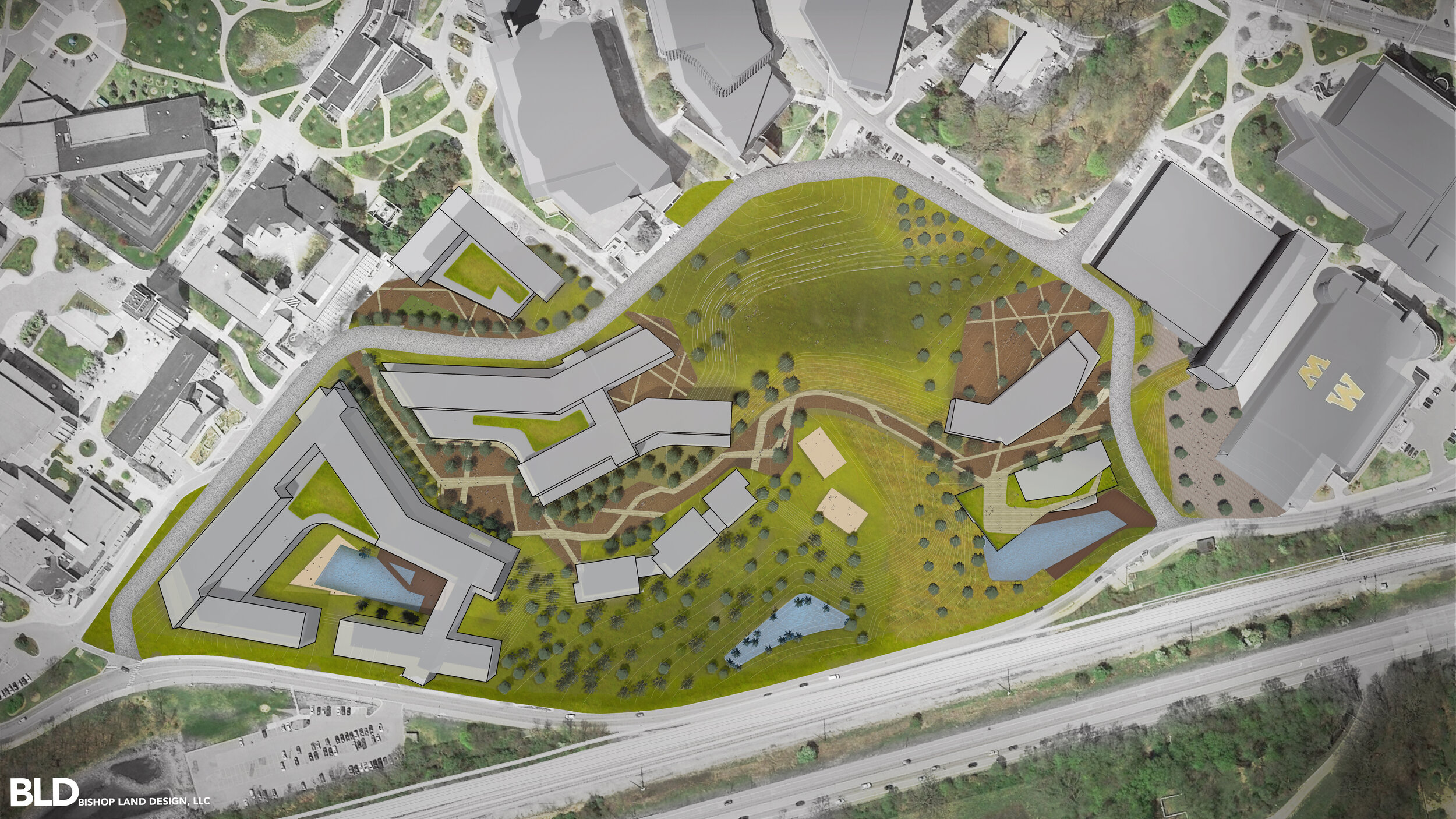

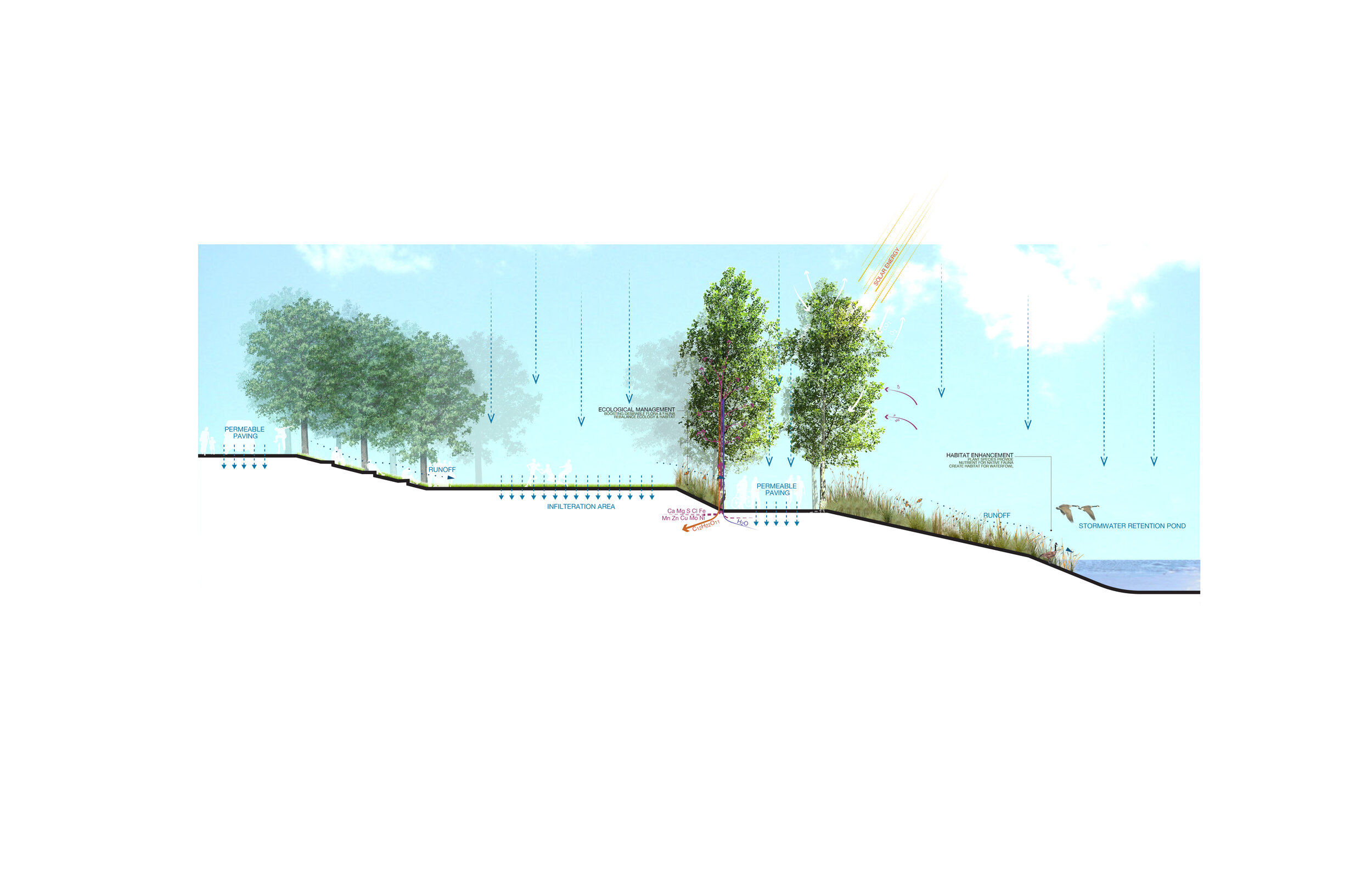
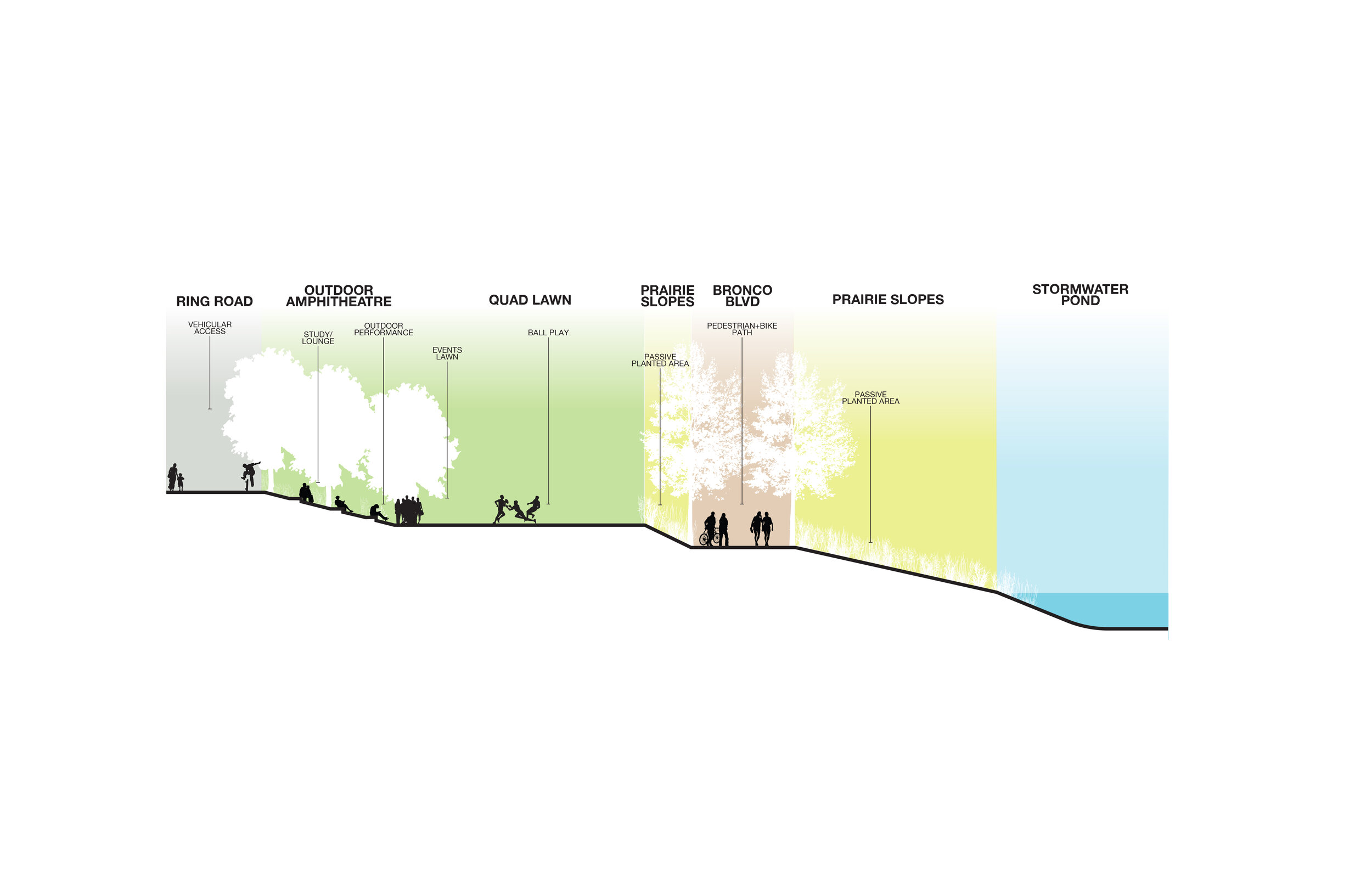
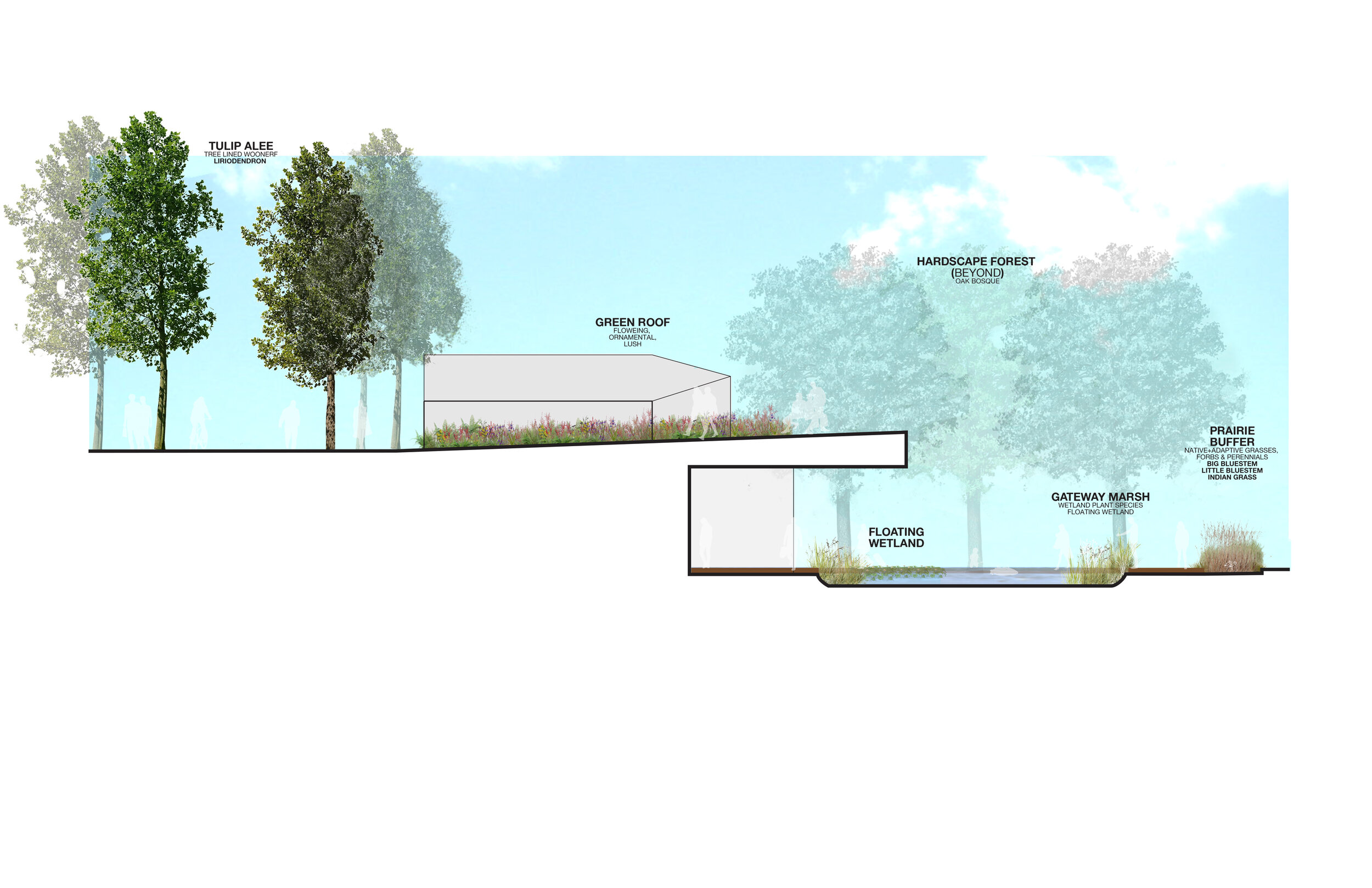
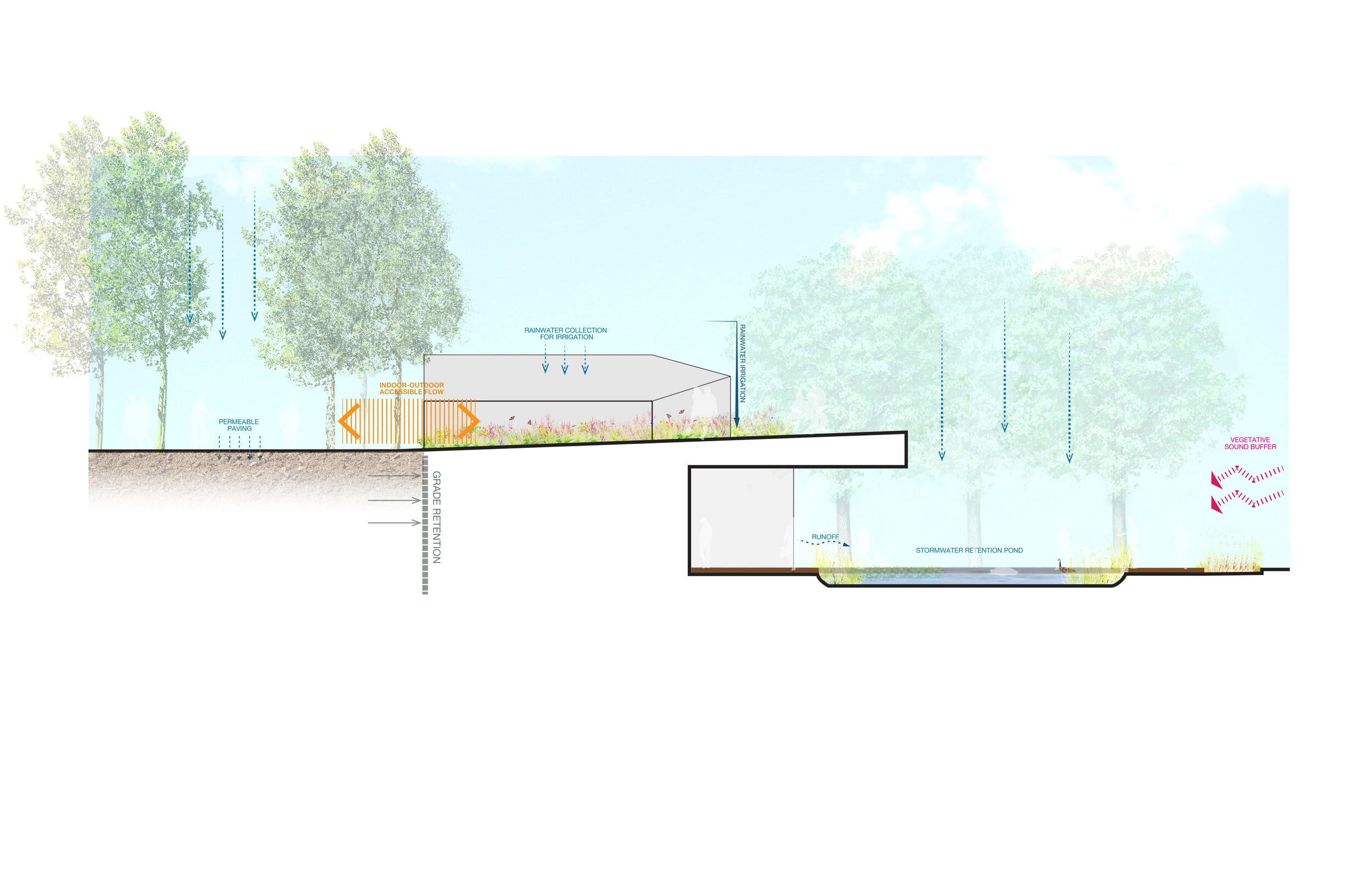
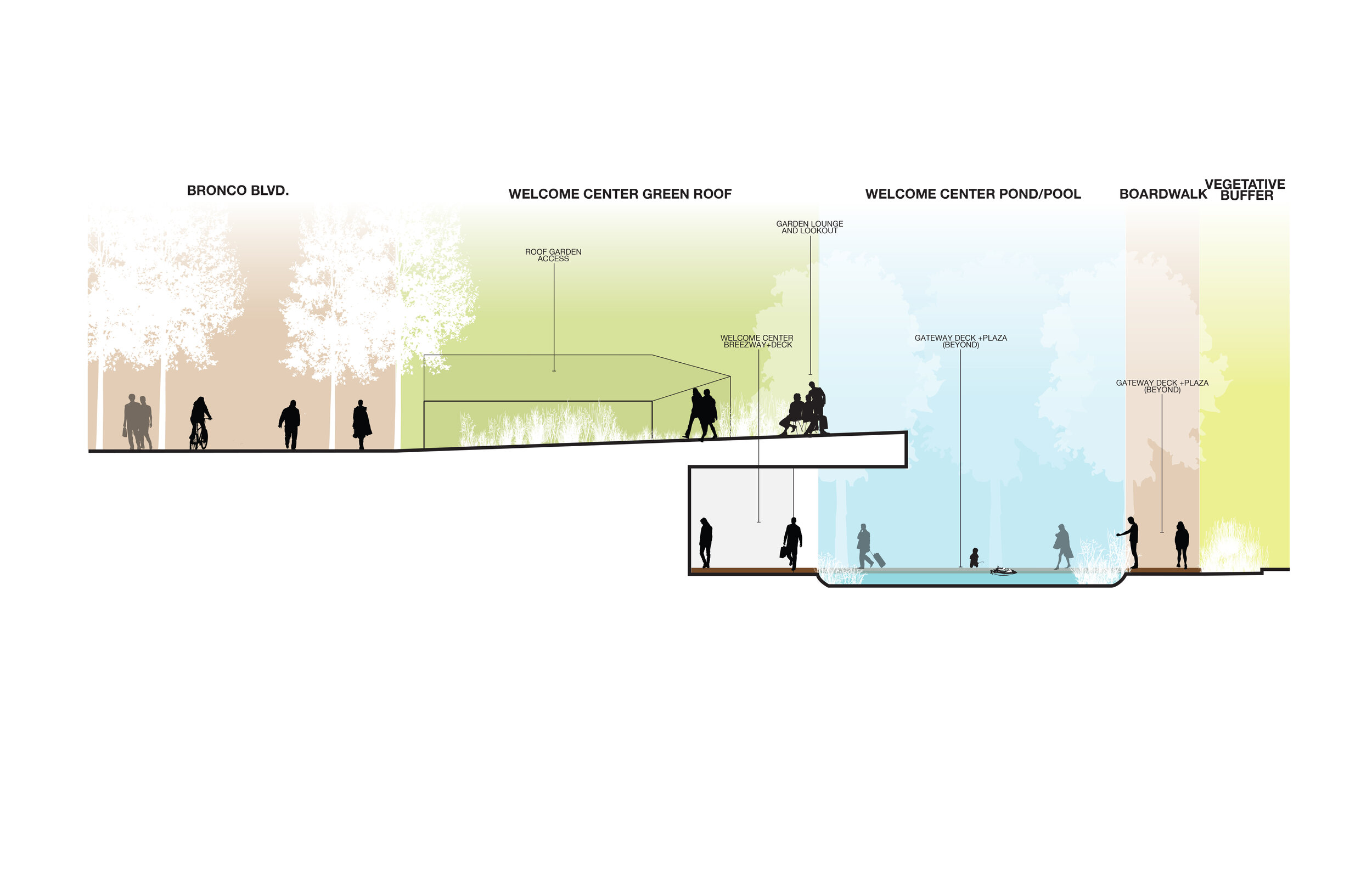
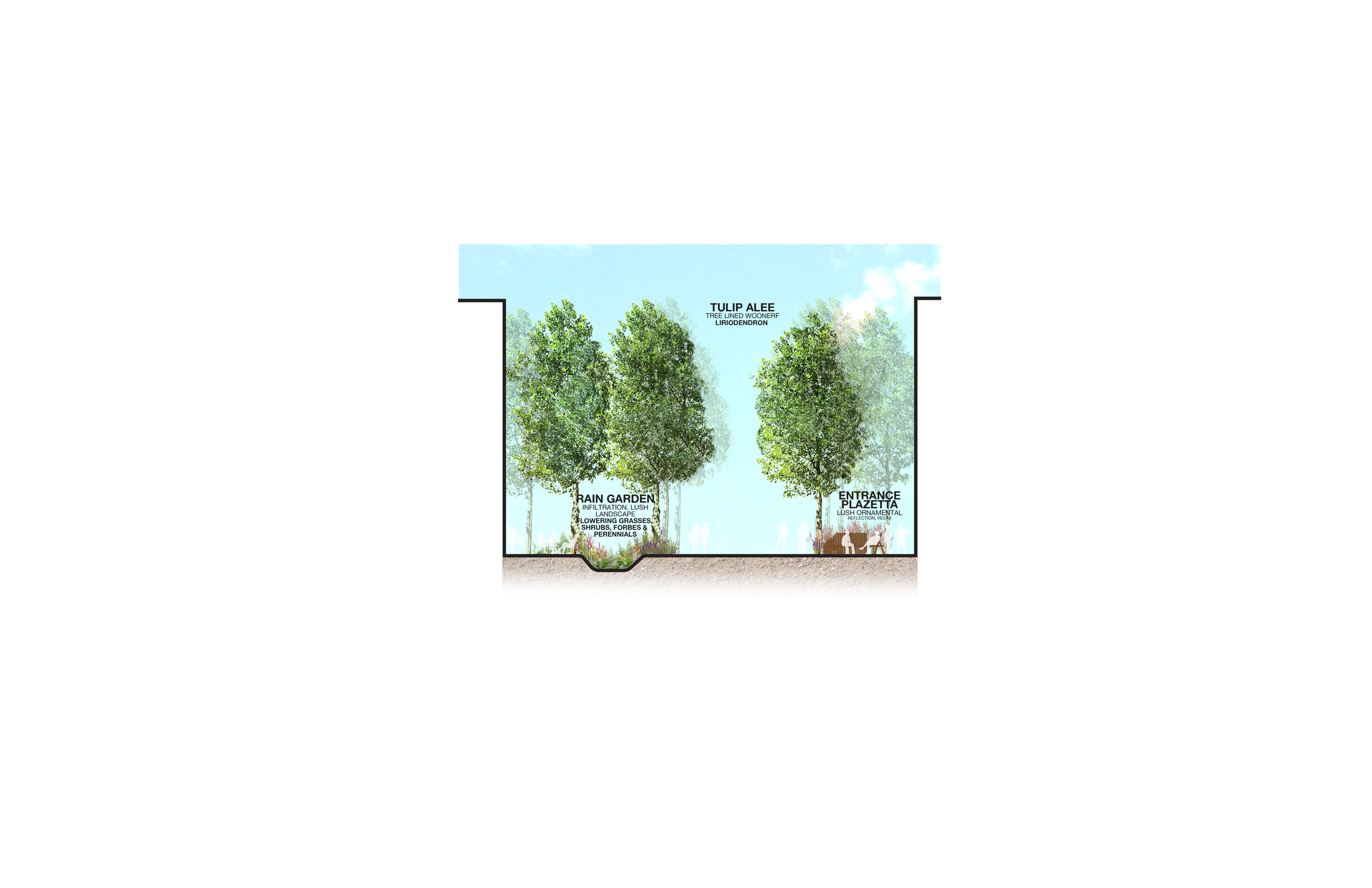
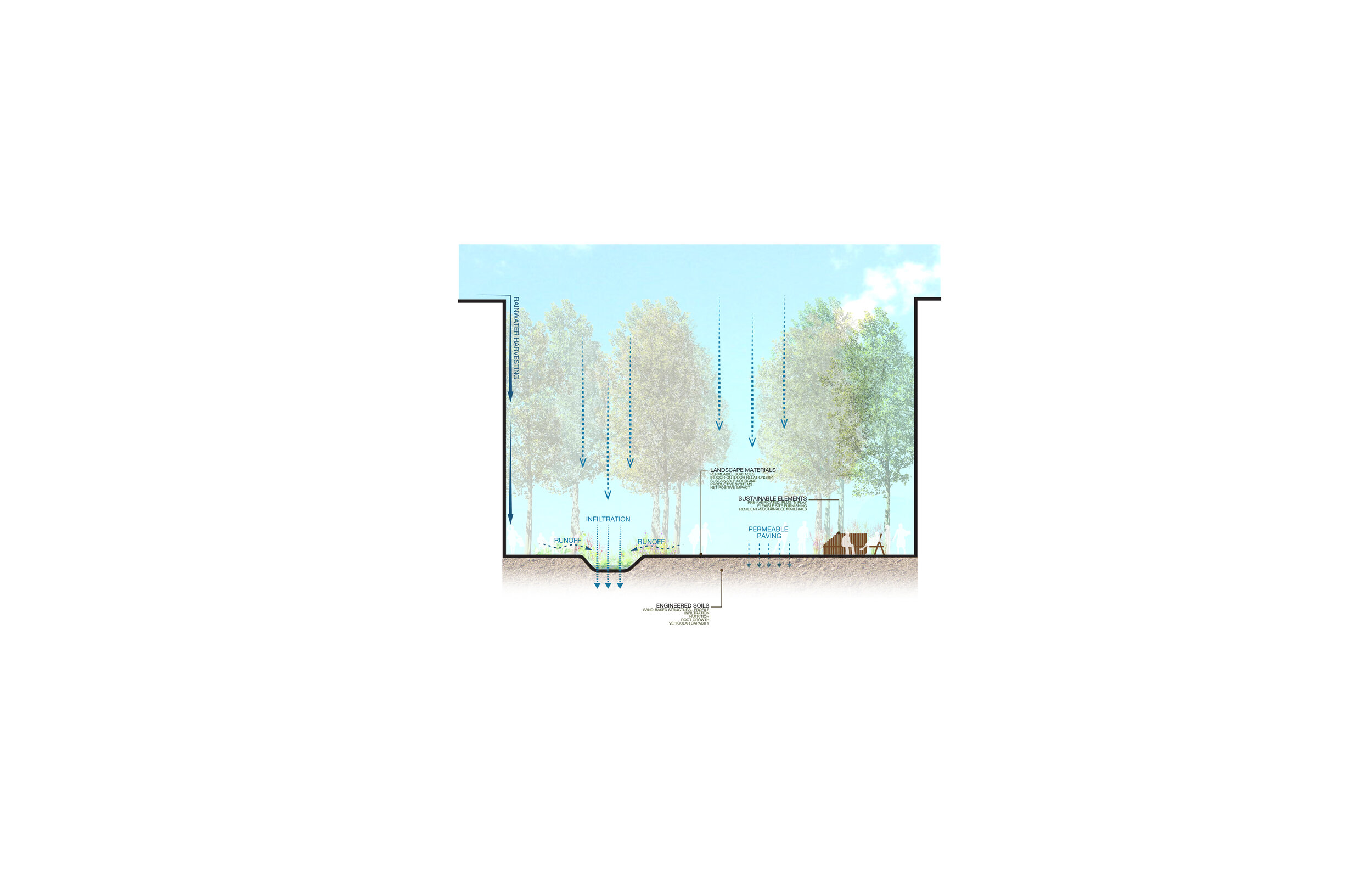
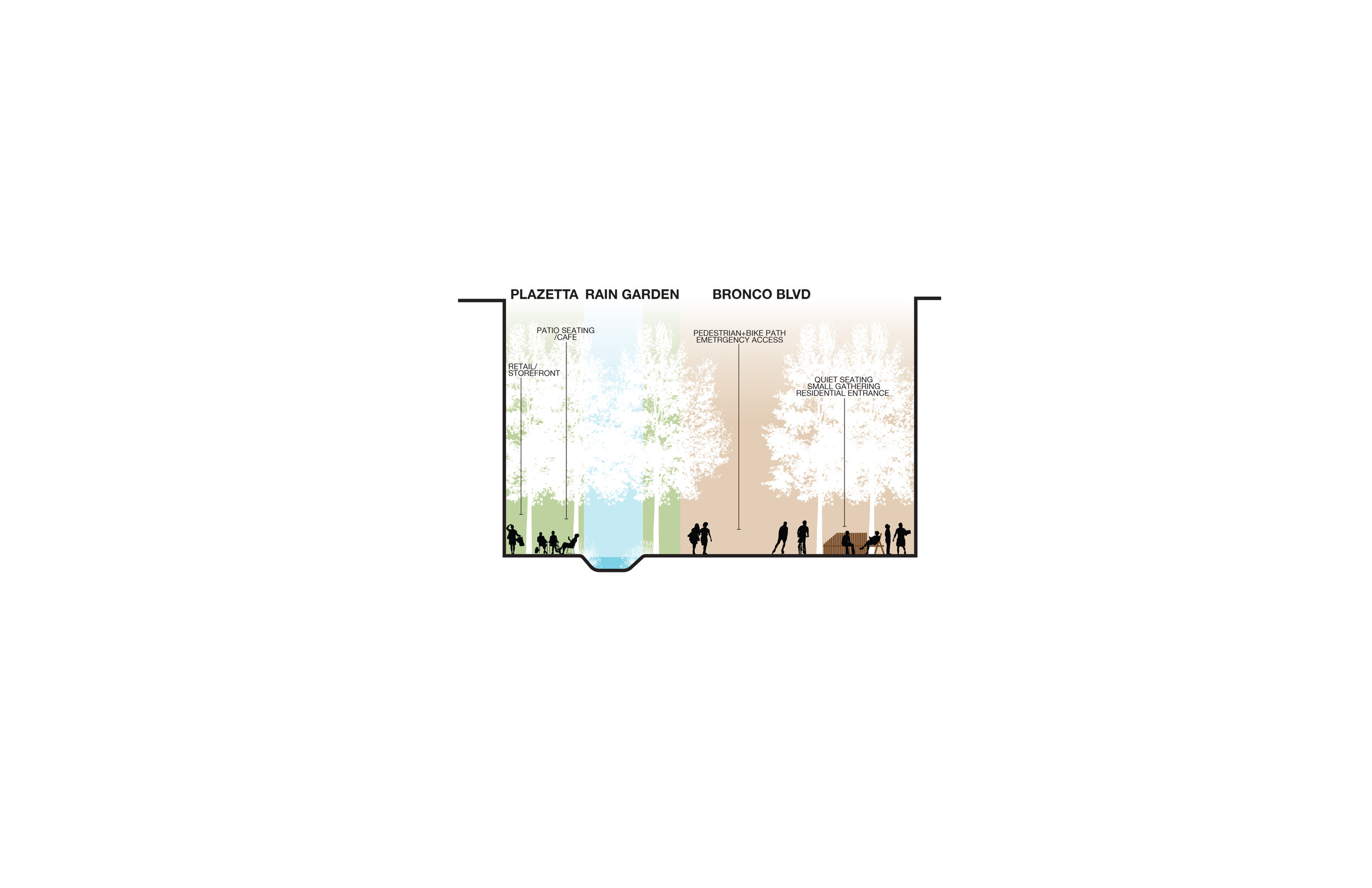
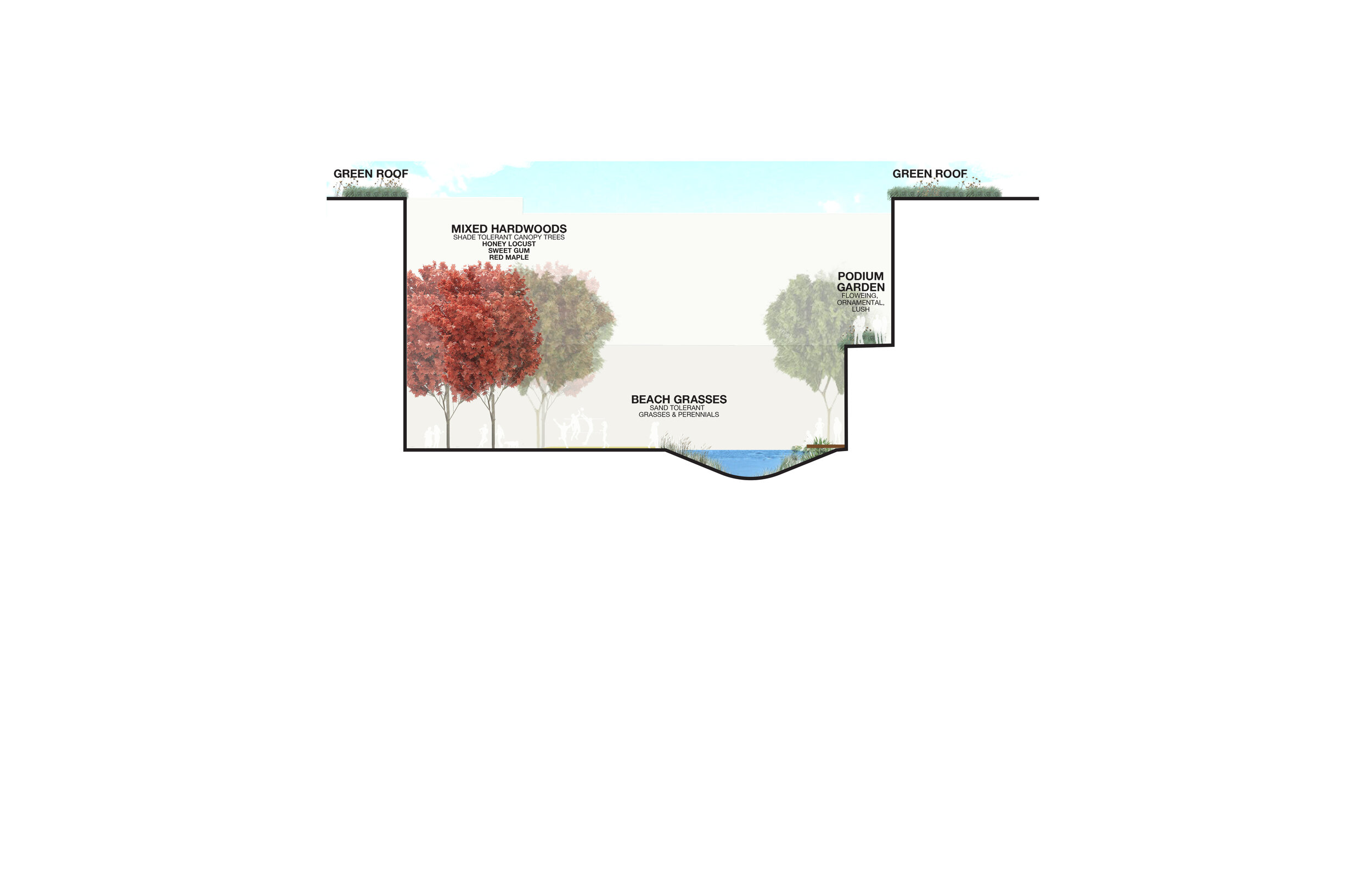
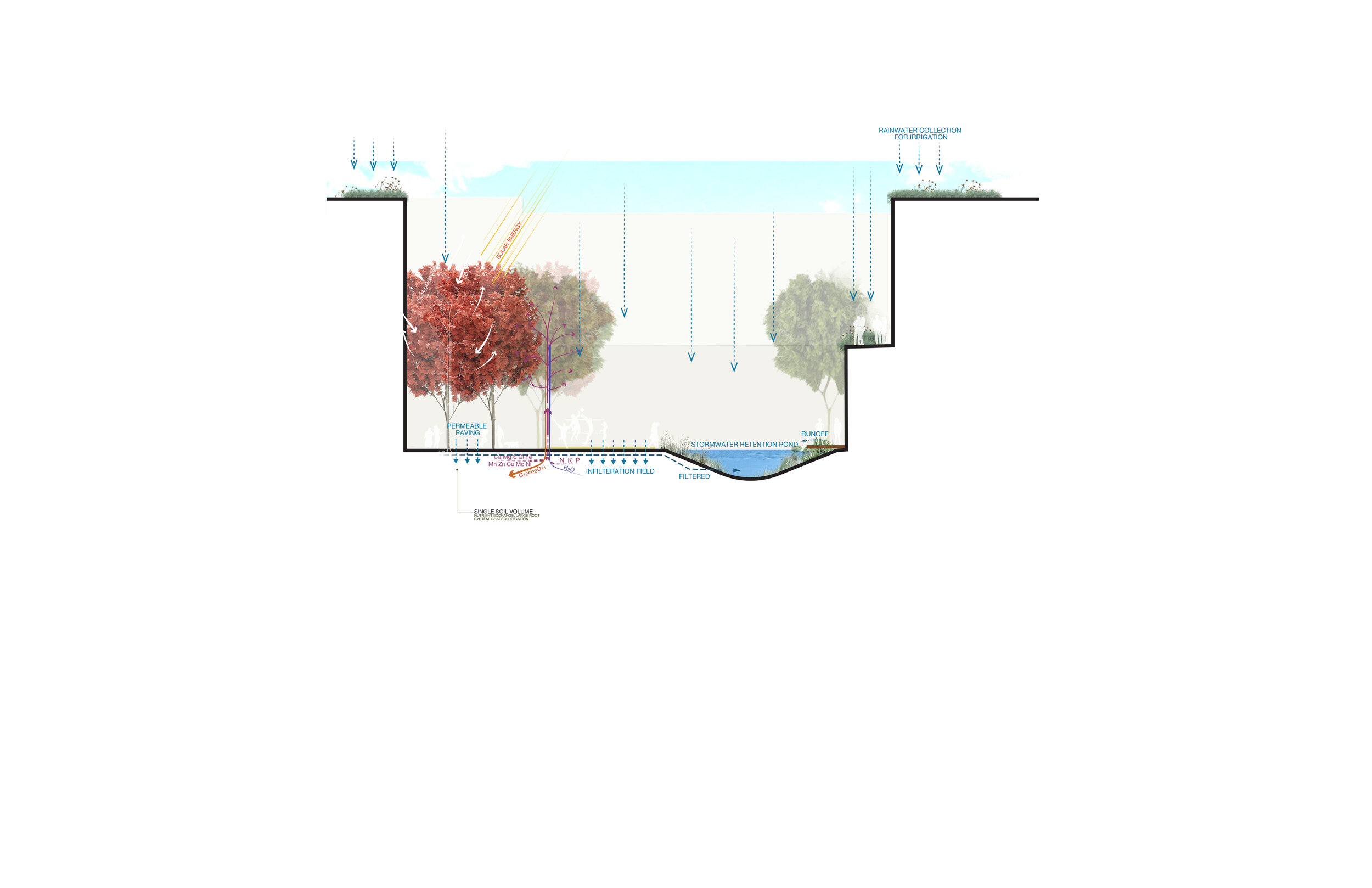
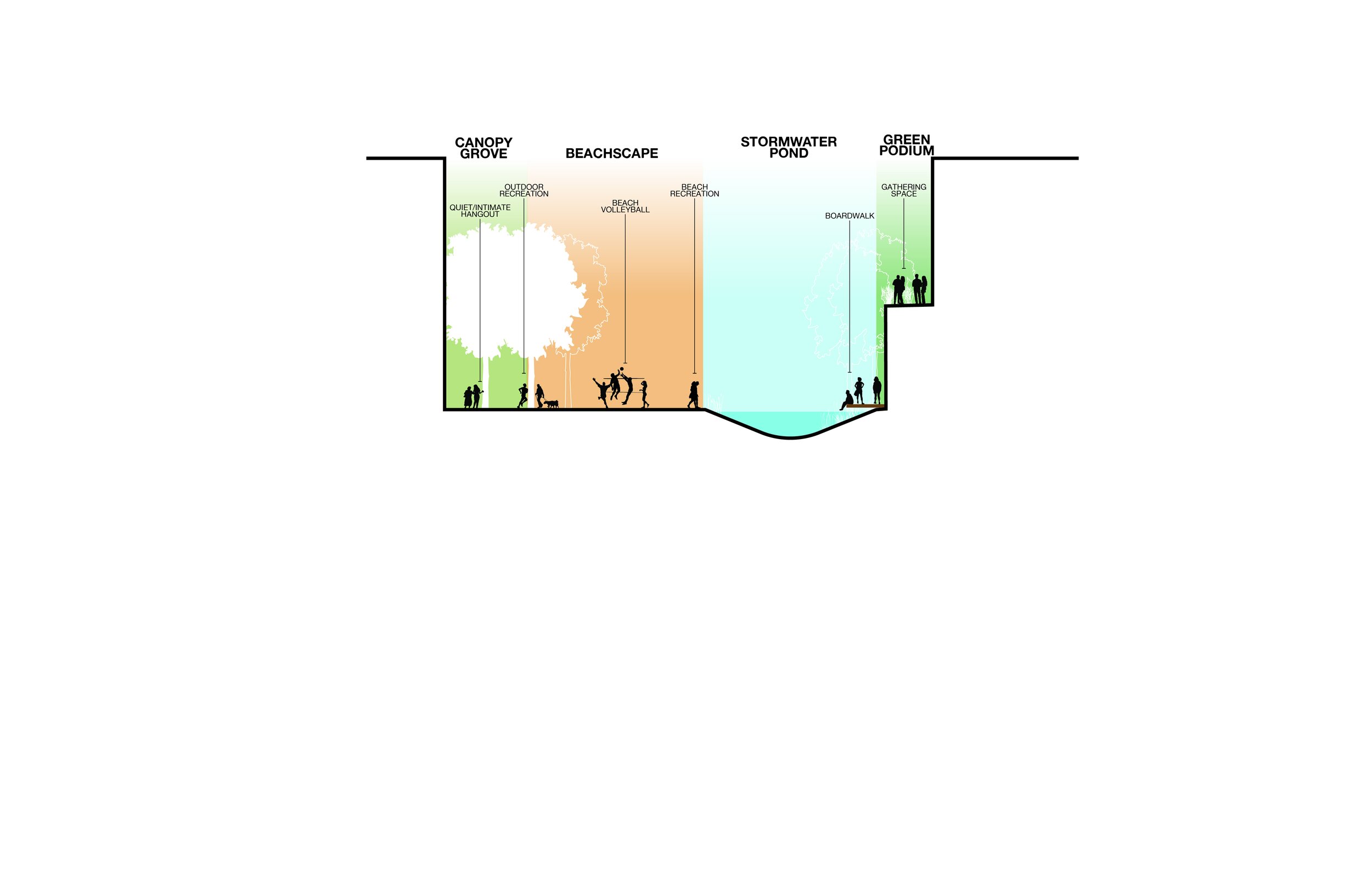
The landscape for the WMU Hilltop Village leverages the performative function of natural systems to construct a campus landscape that integrates student lifestyle and outdoor programming, stormwater management, and blue/green infrastructure strategies, while establishing adaptive, native ecologies.
The steep slopes of the site organized the design and provide an opportunity to introduce a pedestrian focused corridor that blends public, private, and student life realms. Bronco Boulevard, a woonerf flanked by an allée of tulip trees, form a pedestrian thoroughfare from the main campus towards the athletic, health, and wellness facilities. Its width supports the occasional emergency and service vehicle, as well as crowded, celebratory activities. This route creates a vibrant density with regular student and public nodes that offer both outwardly directed energy and more intimate areas for reflection and study.
Programmatic features are blended along Bronco Boulevard and throughout the site by diversifying scale and materiality. From intimate conversations to large, lively game-day celebrations, all activities are accommodated by leveraging enclosure scales that respond to the topography and proposed buildings. Food trucks can congregate along the vehicular bearing pavements at the Oak Bosque. Concerts, graduation ceremonies, and festivals can take advantage of the integrated seating of the tulip tree amphitheater and the large, flat open space of the central lawn.
Diversity and uniqueness across the site are achieved by reintroducing the historic and native oak savanna landscape that was once ubiquitous in the Kalamazoo region. Reintroduction of these ecologies provides the added benefit of managing stormwater throughout the site. Sand volleyball courts and interior courtyards serve the dual purpose of providing amenities while collecting and slowly dispelling runoff into soil to promote more continuous and even recharge of the groundwater.
